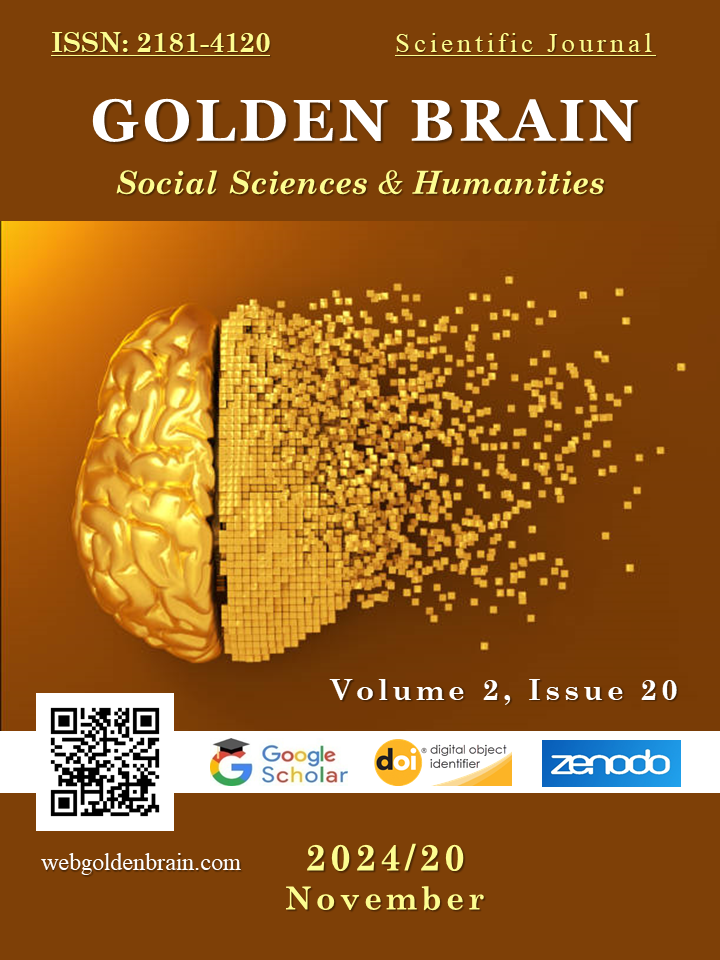HOW TO HELP CHILDREN WITH ORAL LANGUAGE DEVELOPMENT AT 1 TO 2 YEARS OF AGE?
Main Article Content
Abstract
This article explores language acquisition in early childhood, emphasizing its critical role in cognitive, social, and academic development. Focusing on linguistic stage 2, it examines developmental milestones in one- to two-year-olds, as outlined by Australia’s Early Years Learning Framework and National Quality Standards. During this stage, children advance from single words to two-word phrases, build a receptive vocabulary of 100-300 words, and begin following simple commands. Language development relies on both biological factors and environmental input, influenced by theories from Piaget and Vygotsky, who highlight cognitive readiness and social interaction. Practical approaches like dialogic reading and verbal mapping are examined as effective strategies to foster language acquisition. These methods, aligned with the Early Years Learning Framework’s communication outcomes, demonstrate the importance of family and caregiver roles in promoting linguistic growth, providing children with essential tools for meaningful communication and understanding.
Article Details

This work is licensed under a Creative Commons Attribution 4.0 International License.
How to Cite
References
Chang, C. S., Hsieh, F. J., Chen, T. Y., Wu, S. C., Tzeng, O. J., & Wang, S. (2023). Revisiting dialogic reading strategies with 12-month-old infants. Early Childhood Education Journal, 51(8), 1413-1426.
Crain, W. C. (2010). Theories of development: concepts and applications (6th ed.). Prentice Hall.
Department of Education. (2022). Belonging, being & becoming: The early years learning framework for Australia V2.0. https://www.acecqa.gov.au/sites/default/files/2023-01/EYLF-2022- V2.0.pdf
Department of Education Employment and Workplace Relations for the Council of Australian Governments (DEEWR) (2015). Early Years Learning Framework Practice-Based Resources - Developmental Milestones. Canberra: Commonwealth of Australia
Dickinson, D. K., Griffith, J. A., Golinkoff, R. M., & Hirsh-Pasek, K. (2012). How reading books fosters language development around the world. Child development research. Article ID: 602807. https://doi.org/10.1155/2012/602807
Feldman H. M. (2019). How Young Children Learn Language and Speech. Pediatrics in review, 40(8), 398–411. https://doi.org/10.1542/pir.2017-0325
Fellowes, J., & Oakley, G. (2019). Language, literacy and Early Childhood Education (3rd ed.). Oxford University Press.
Lefa, B. (2014). The Piaget theory of cognitive development: an educational implications. Educational psychology, 1(1), 1-8.
Levey, S. (Ed.). (2017). Introduction to language development: Second edition. Plural Publishing, Incorporated.
Mindell, J. A., & Williamson, A. A. (2018). Benefits of a bedtime routine in young children: Sleep, development, and beyond. Sleep medicine reviews, 40, 93-108.
Newman, R. S., Rowe, M. L., & Ratner, N. B. (2016). Input and uptake at 7 months predict toddler vocabulary: The role of child-directed speech and infant processing skills in language development. Journal of Child Language, 43(5), 1158-1173.
Oller, J. W., Oller, S. D., & Oller, S. N. (2015). Milestones: normal speech and language development across the life span (2nd ed.). Plural Publishing.
Otto, B. (2014). Language development in early childhood education (4th ed.). Pearson.
Plural, P. I., Oller, S. D., & Oller, S. N. (2012). Milestones: Normal speech and language development across the lifespan, second edition. Plural Publishing, Incorporated.
Rowe M. L. (2022). Environmental influences on early language and literacy development: Social policy and educational implications. Advances in child development andbehavior, 63, 103–127. https://doi.org/10.1016/bs.acdb.2022.04.001
Spagnola, M., & Fiese, B. H. (2007). Family routines and rituals: A context for development in the lives of young children. Infants & young children, 20(4), 284-299.
Timothy A. Kinard & Jesse S. Gainer 2014 Leading by Following: An Introduction to Verbal Mapping as “Naming” Abstract, Affective Realia, English In Texas 44(1), 30-35
Trivette, C. M., Dunst, C. J., & Gorman, E. (2010). Effects of parent-mediated joint book reading on the early language development of toddlers and preschoolers. Center for Early Literacy Learning, 3(2), 1-15.
Towson, J. A., Gallagher, P. A., & Bingham, G. E. (2016). Dialogic reading: Language and preliteracy outcomes for young children with disabilities. Journal of Early Intervention, 38(4), 230-246.
Topçiu, M., & Myftiu, J. (2015). Vygotsky theory on social interaction and its influence on the development of pre-school children. European Journal of Social Science Education and Research, 2(3), 172-179.
Zevenbergen, A. A., & Whitehurst, G. J. (2003). Dialogic reading: A shared picture book reading intervention for preschoolers. On reading books to children: Parents and teachers, 177, 200.
